The GTX designation adorns VW’s entire program of newer electric cars, but here at least it feels particularly sporty.
Bilbasen was invited to Switzerland by Volkswagen Denmark.
Whether it’s the ID.3, 4, 5, 7 or even the big ID.Buzz, VW’s electric cars can be chosen in GTX trim. Just as the GTI has always defined the sporty variants with a petrol engine, the GTX is the definition of the sporty variants from VW’s electric cars.
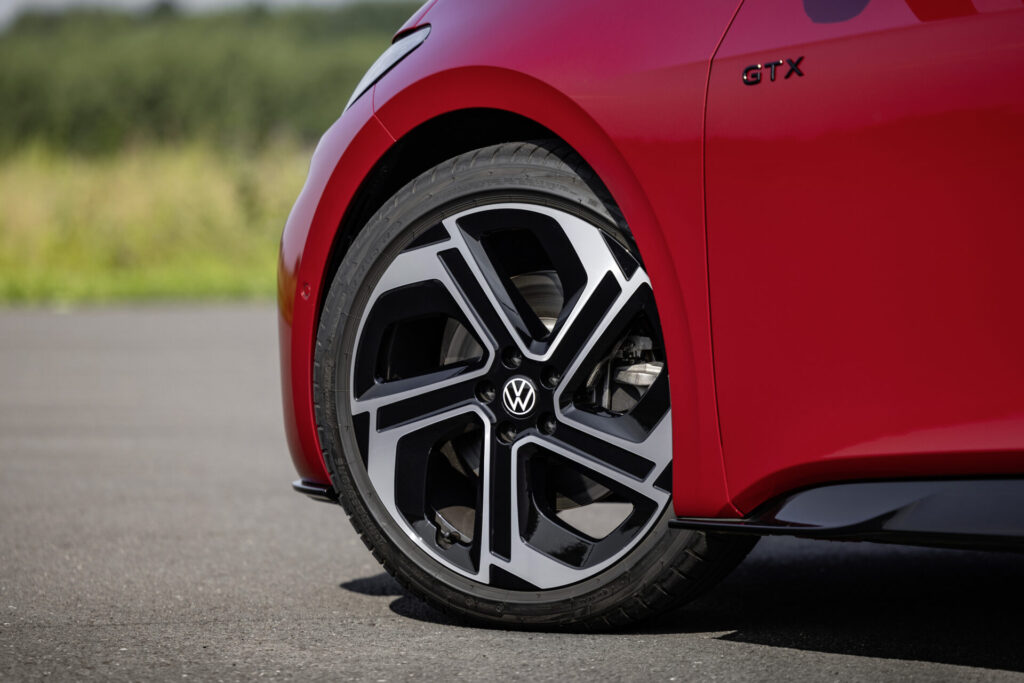
“Is it very different?”asks the German gentleman who is in the process of charging his first-generation ID.3 when I drive into the charging station in the new ID.3 GTX. It is therefore not difficult to spot – and certainly not for connoisseurs – that this is a special variant.
I am on my way to Locarno in Switzerland from Munich. The trip goes via Zurich and across the Alps, with lots of motorway driving and fresh driving in the mountains. A route of just over 600 km. Even though the range is stated at 601 km, a single charge is therefore needed with these conditions. Fair enough.
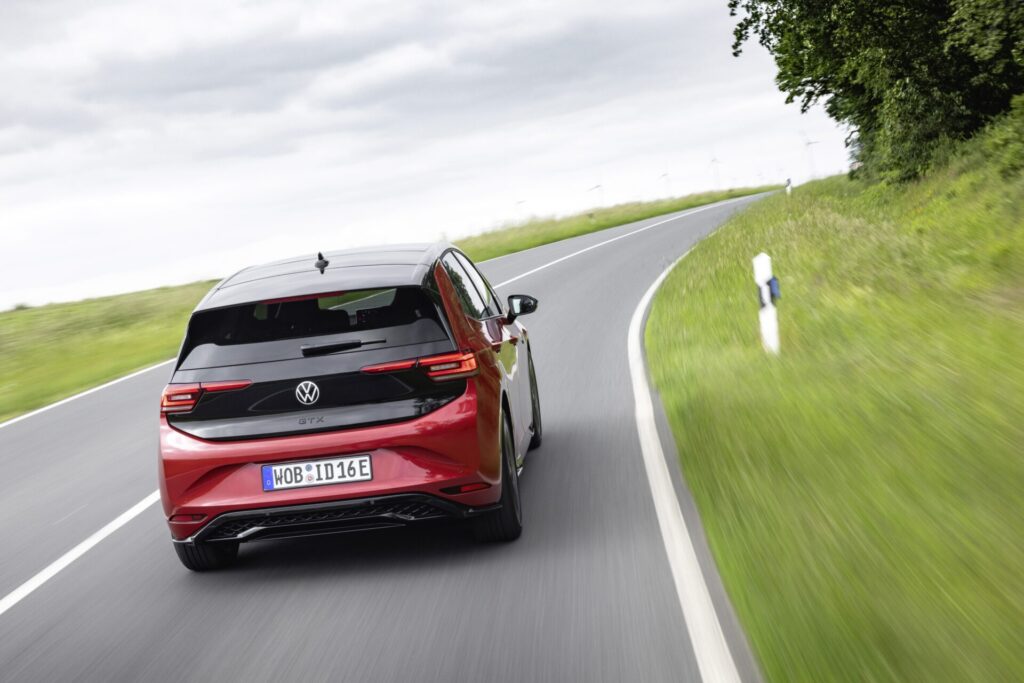
“Like night and day” I answer his question, and I hardly know where to begin. The GTX edition, and especially the latest ID.3 in general, is a completely different car to the first ID.3. On all parameters.
A sense of wildness
The last time I drove the GTX was in the long-distance floater ID.7 GTX, which stands in stark contrast to the small, spry ID.3 GTX, which with its new sporty chassis provides a rather dynamic driving experience.
It may not be quite as engaging as an old-fashioned GTI – a point where electric cars generally struggle. But it can also be a plus. It depends on temperament.
On the way to the charging station, I push the car to the limit on the “lawless” stretches of the German Autobahn. The car is given up to be electronically limited to a top speed of 180 km/h and I get the needle up to 186 km/h so the money fits.
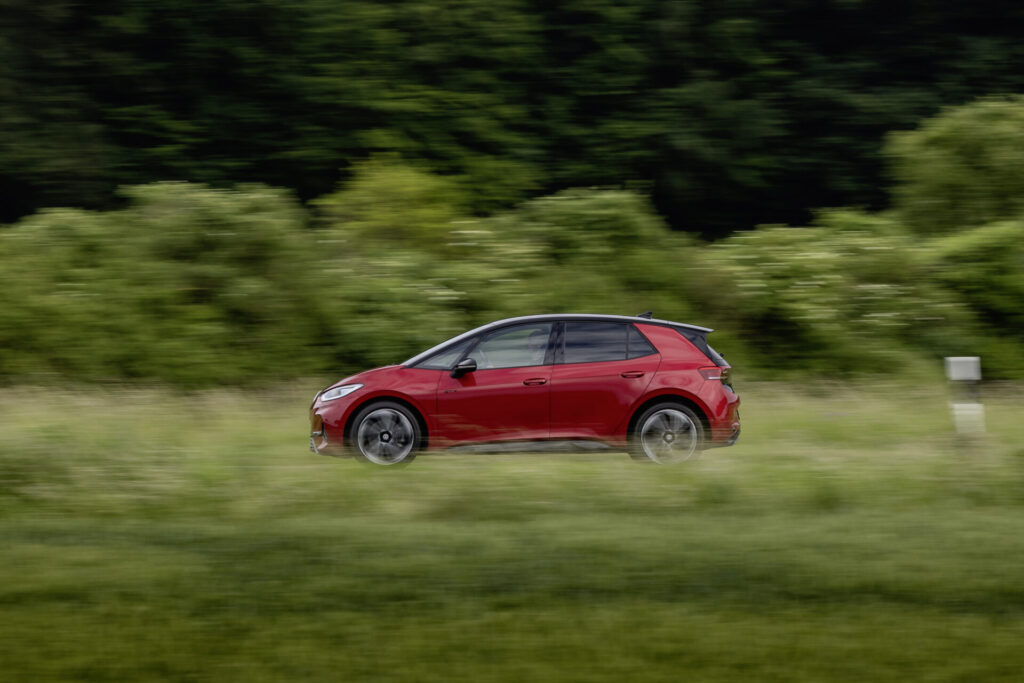
At the same time, the high torque of 545 Nm means that I barely have to press the accelerator before it shoots off like. Also when acceleration is started from 100 km/h.
Together with a hard(er) chassis, the accelerator response gives a feeling of wildness – but not untamed. Even at high speeds, all four wheels feel firmly planted in the asphalt and the steering is completely stable. The exception is if you forget to switch off the lane assistant before pressing the accelerator to the bottom, then the steering is more “nervous”. It is unlikely to be a problem with the speed limits on the Danish motorways.
At the high speeds, the noise level in the cabin is not quite as low as I would like. Especially not on the bumpy German Autobahn. This does not mean that you have to sit and shout at each other, but with the ID.7 GTX Tourer fresh in mind, there is a difference in being.

In addition, the ID.3 GTX has a very acceptable consumption. On my 600+ kilometer trip from Munich via Zurich to Locarno it used an average of 18 kWh / 100 km. The trip stretches over the Alps and at 140-150 km/h on long stretches of motorway. The battery is charged with up to 185 kW, so the waiting time at the charging station is not unreasonable.
Excellent route planning
On the trip, I had the opportunity to test VW’s route planner, and it works terrifically. When you enter the destination, the system itself comes up with charging suggestions on the route, just as it informs you how many minutes you need to charge in order to reach the destination with between 30 and 90 km left on the battery.

On the whole, Volkswagen has got its software under control. The adaptive cruise control has become a real pleasure, eliminating in the vast majority of cases the need to even touch the pedals. Even in roundabouts and bends. The only hiccup is that it is somewhat slow to re-accelerate if the car in front of you slows down and turns right. But it is probably adjusted based on the mantra better safe than sorry.
In my opinion, Volkswagen’s software is among the best on the market when it comes to efficiency and ease of use – and it can only get better as VW’s so-called Swarm– database is expanded.
Like a Cupra Born VZ
The driveline of the ID.3 GTX is largely identical to the driveline of the sister car Cupra Born VZ. The only exception is the engine, which in the case of the ID.3 delivers 286 horses, while the Born VZ delivers a whopping 326 horses. You can also get that in the ID.3 GTX, but then you need an equipment level up to the ID.3 GTX Performance and it has not yet come out of the factory.
The Performance edition will also be equipped with an adaptive DCC sports suspension, which automatically adapts the car’s chassis to the best driving conditions. It is not on board the variant I drive, but is available as an option.
On the other hand, the ID.3 GTX strives for a different target group than the more, shall we say, “fresh” type that Cupra addresses. Where the Born VZ is smeared in copper colors and fierce sporty details, the ID.3 GTX is more understated in its expression. Both outside and inside.
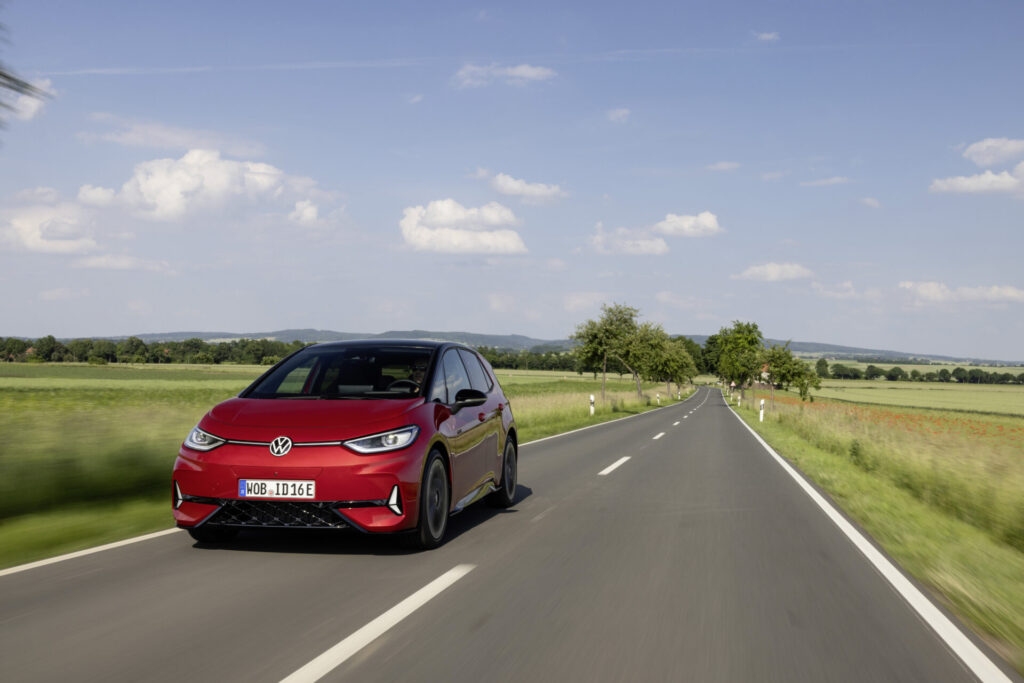
The black interior with the red accent also makes the GTX models somewhat less spaceship-like than the “normal” ID models.
The piano lacquer inside the ID.3 GTX has been greatly reduced. On the other hand, the car’s side skirts – just like on the ID.7 GTX Tourer – are finished in high-gloss black. It will be interesting to see how they manage a Danish winter with salt on the roads.
Worth waiting for the Performance edition
The starting price of DKK 369,995 may not seem so daunting, but in usual VW style you are not exactly spoiled for choice either. The worst thing is that even the Assistant package is an additional purchase, while the heat pump is after all included.
The version I drive is pimped with all available packages (Assistant package Plus, Interior package Plus and Comfort package), which brings the Danish price of the variant I drive up to a hefty DKK 449,500.
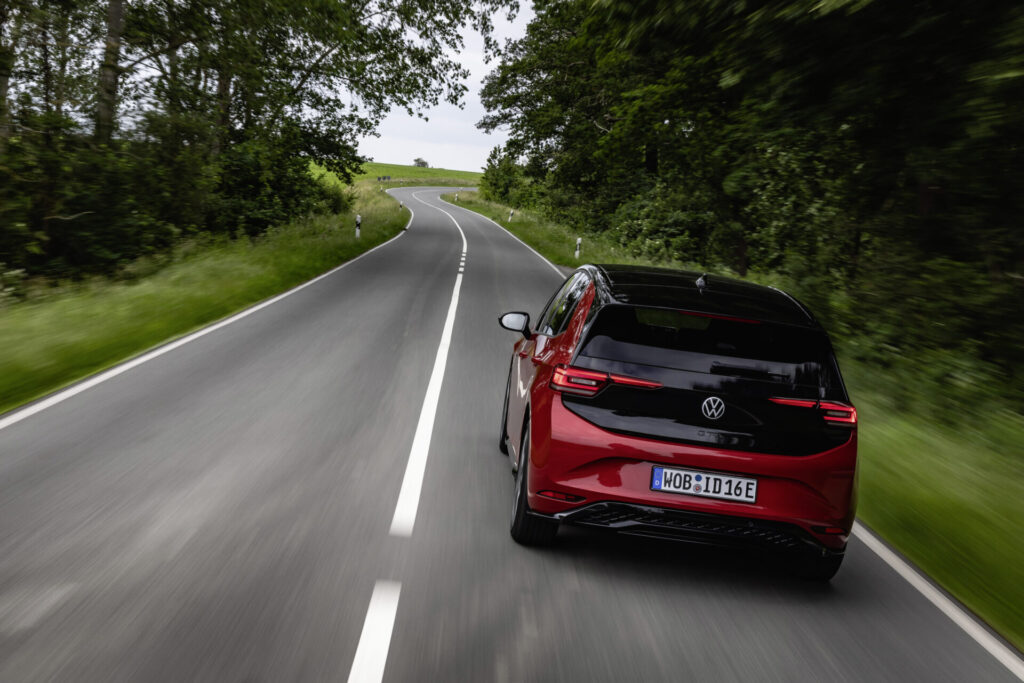
If you don’t want to settle for the equipment that the entry-level model offers, it may well pay to wait for the Performance variant. It has all the packages mentioned as standard equipment – and in addition it has both advanced adaptive sports suspension and an engine that delivers 40 extra horsepower.
The performance edition costs DKK 40,000 more than the regular GTX. It is DKK 60,000 cheaper than the regular GTX with all three equipment packages. The only place you compromise is on the range. But it is about just 10 km.
SPECIFICATIONS
VW ID.3 GTX
Motor: Electric motor
Performance: 286 hp / 545 Nm
0-100 km/h: 5.9 seconds
Top speed: 180 km/h
Consumption: 14.6 kWh / 100 km
Battery Capacity: 79 kWh
Range: 601 kilometers
Charging capacity: Up to 185 kW
Dimensions (L/W/H): 426/181/156 cm
Curb weight: 2,002 kilos
Draw weight: REACH
Trunk volume: 385 litres
Price: DKK 369,995 (ID.3 available from DKK 259,995)
*Private leasing 48 months, 15,000 km/year (one-off payment/monthly payment): 10,000 / DKK 5,495
Tax basis, company car: Not disclosed
*Private lease prices are for GTX Performance
